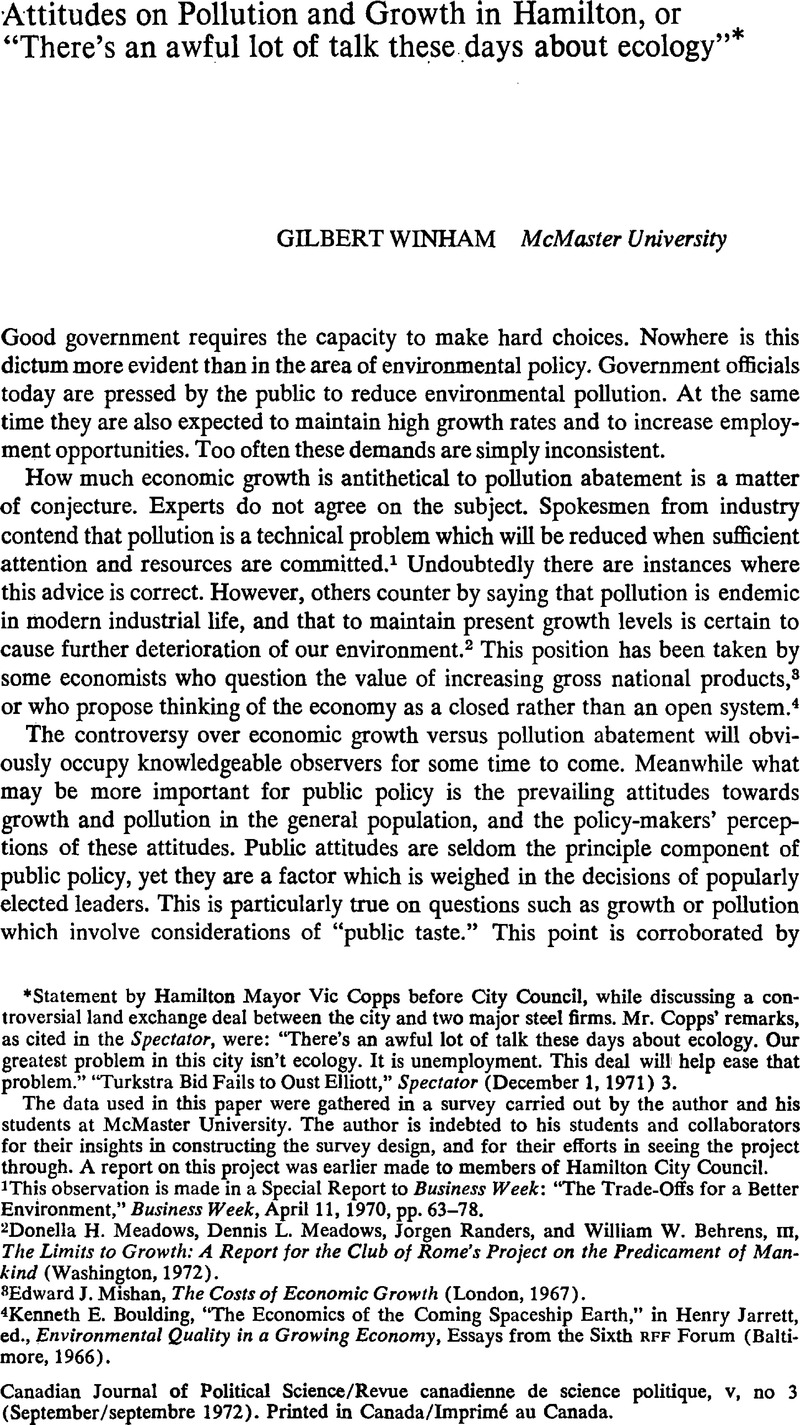Published online by Cambridge University Press: 10 November 2009

1 This observation is made in a Special Report to Business Week: “The Trade-Offs for a Better Environment,” Business Week, April 11, 1970, pp. 63–78.
2 Meadows, Donella H., Meadows, Dennis L., Randers, Jorgen, and Behrens, William W. III, The Limits to Growth: A Report for the Club of Rome's Project on the Predicament of Mankind (Washington, 1972).Google Scholar
3 Mishan, Edward J., The Costs of Economic Growth (London, 1967).Google Scholar
4 Boulding, Kenneth E., “The Economics of the Coming Spaceship Earth,” in Jarrett, Henry, ed., Environmental Quality in a Growing Economy, Essays from the Sixth RFF Forum (Baltimore, 1966).Google Scholar
5 See, for example, R, Paul. and Ehrlich, Anne H., Population Resources Environment (San Francisco, 1970), 256.Google Scholar
6 See reports of CIPO and AIPO polls in the Toronto Daily Star, Dec. 2, 1970, and the Chicago Sun-Times, May 14, 1970.
7 See, for example, Auliciems, Andris and Burton, Ian, “Perception and Awareness of Air Pollution in Toronto,” Working Paper #13, National Hazard Research, University of Toronto, 1970.Google Scholar
8 Winham, Gilbert R. and Cunningham, Robert B., “Party Leader Images in the 1968 Federal Election,” this Journal, III no 1 (March 1970), 37–55Google Scholar. The question was: “What are the problems facing Canada that the government should do something about?” The major issue areas were coded as follows: cost of living 26 per cent, housing 22 per cent, taxes 22 per cent, social welfare 18 per cent, French-English unity 16 per cent, and unemployment 14 per cent. Respondents could name more than one issue. Of the total sample, 14 per cent declined to mention any issue. Pollution was not mentioned often enough to warrant coding.
9 Subsequent analysis uses the question on industrial development (industries and jobs) as the indicator for attitudes towards growth.
10 The question was: “Do you think people will be forced out of their jobs if companies are required by government to cut back on pollution?”
11 See Trop, Cecile and Roos, Leslie L. Jr., “Public Opinion and the Environment,” in Roos, Leslie L. Jr. ed., The Politics of Ecosuicide (New York, 1971), 52–63.Google Scholar
12 For further discussion, see Prothro, James W. and Grigg, Charles M., “Fundamental Principles of Democracy: Bases of Agreement and Disagreement,” Journal of Politics, XXII (May 1960), 276–94.CrossRefGoogle Scholar
13 An air pollution map prepared by Ontario's Air Management Branch, Department of Energy and Resources Management, divided the city into five areas according to monthly dust fall for the year 1969. Respondents living in less polluted areas more frequently chose pollution as the major problem, and this relationship held even after controlling for education and income. More memorable, however, than the numerical data was the response of one industrial area resident. The air was bad enough, he claimed, to peel the paint from his automobile in two years, but his main concern was unemployment.
14 Drucker, Peter F., “Saving the Crusade,” Harper's Magazine, 244 (Jan. 1972), 66–71.Google Scholar